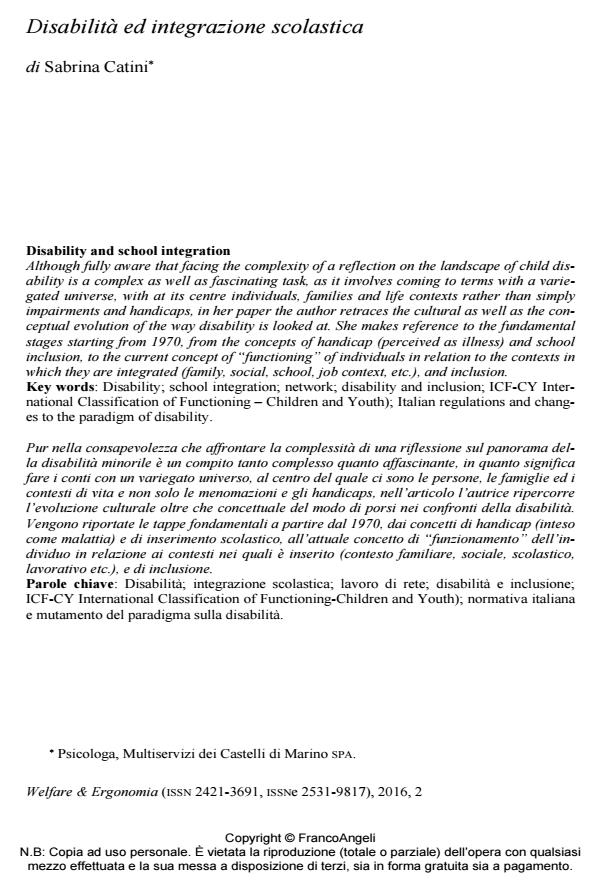Disability and school integration
Journal title WELFARE E ERGONOMIA
Author/s Sabrina Catini
Publishing Year 2017 Issue 2016/2
Language Italian Pages 15 P. 103-117 File size 213 KB
DOI 10.3280/WE2016-002006
DOI is like a bar code for intellectual property: to have more infomation
click here
Below, you can see the article first page
If you want to buy this article in PDF format, you can do it, following the instructions to buy download credits

FrancoAngeli is member of Publishers International Linking Association, Inc (PILA), a not-for-profit association which run the CrossRef service enabling links to and from online scholarly content.
Although fully aware that facing the complexity of a reflection on the landscape of child disability is a complex as well as fascinating task, as it involves coming to terms with a variegated universe, with at its centre individuals, families and life contexts rather than simply impairments and handicaps, in her paper the author retraces the cultural as well as the conceptual evolution of the way disability is looked at. She makes reference to the fundamental stages starting from 1970, from the concepts of handicap (perceived as illness) and school inclusion, to the current concept of "functioning" of individuals in relation to the contexts in which they are integrated (family, social, school, job context, etc.), and inclusion.
Keywords: Disability; school integration; network; disability and inclusion; ICF-CY International Classification of Functioning ‒ Children and Youth); Italian regulations and changes to the paradigm of disability.
Sabrina Catini, Disabilità ed integrazione scolastica in "WELFARE E ERGONOMIA" 2/2016, pp 103-117, DOI: 10.3280/WE2016-002006